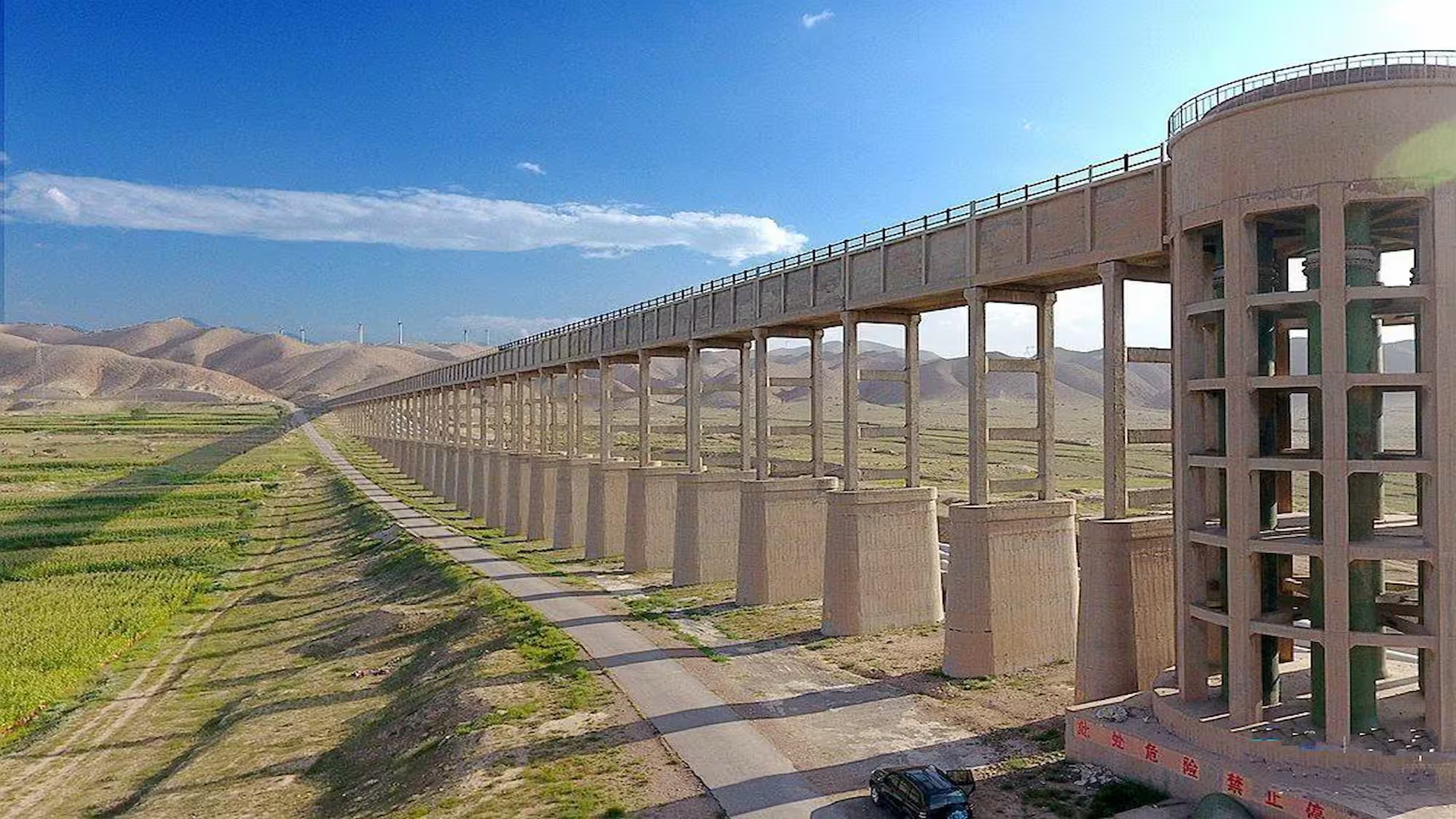Hong Si Bu

There’s an interesting phenomenon: almost every place’s promotional materials claim geographical advantages by drawing a circle centered on themselves, even remote towns without railways boast of their connectivity to the world, which is a clear example of self-deception. Hong Si Bu, located at the foot of Helan Mountain in Ningxia, is one such place. If it weren’t for work, I might never have come to this place, and before arriving, I had never heard of it.
Hong Si Bu District is located in central Ningxia and belongs to Wuzhong City. It is the largest centralized relocation and settlement area for migrants in China. Before the district was established, this area was a desert. Through two phases of migration and large-scale development, it now covers an administrative area of 2767 square kilometers and is home to 270,000 migrants.
Originally a desert, Hong Si Bu was transformed into a habitable area through the “1236 Project,” initiated by a former Minister of Water Resources who saw the flat terrain from an airplane and felt it should not go to waste. The project involved irrigation and migration, turning a barren desert into a livable district. In reality, the plan was to develop 1.4 million acres of land, but due to insufficient water resources, only half of the project was completed before further development was halted.
Goji berries, lamb and beef, and wine are Ningxia’s specialties, collectively known as “Ningxia Red.” Hong Si Bu also produces these three items, and the quality is indeed good. Additionally, there is daylily (huanghuacai), which is well- DiMid to this area with annual precipitation of only 200 millimeters and evaporation exceeding 1300 millimeters.
Goji berries, a crop with strong vitality, can grow in many places. However, in regions where more economically valuable crops can be grown, goji berries are not developed, leaving places like Xinjiang and Ningxia to claim they are suitable for goji berry cultivation. Besides goji berries, there is nothing else that can be planted.
Wine is an imported product that has always carried an air of sophistication. Despite the good quality of domestic wine, branding has always been challenging. The wine industry in Hong Si Bu is similar. There are over 20 wineries in the district, but none have established a truly well-known brand. The best wines mostly enter trade channels and flow into third- and fourth-tier cities. The overall profitability of the wine industry in Hong Si Bu is not good, mainly due to the broader environment. Since 2016, China’s wine market has seen continuous decline for five consecutive years, with significant reductions in sales revenue and production. Early on, the wine market was associated with nobility and mystery, making it difficult for ordinary consumers to access. Moreover, many wineries did not allocate budget for market promotion and sales, leading to slow market cultivation. In addition, Hong Si Bu’s high production costs, reliance on distributors for sales, and weak brand premiums make it hard for the wine industry to thrive. Although some wineries have won various wine awards, none have achieved the market recognition of brands like Changyu, Great Wall, or Weilong. Due to the weak brand presence, Hong Si Bu’s wines are mainly sold through distributor channels to lower-tier cities, with most market prices ranging between 100-200 RMB per bottle. Many wine companies invest heavily in wineries and buildings but neglect investment in vineyards, leading to high “non-productive” costs.
Lamb and beef have always been more expensive than pork and poultry because raising cattle and sheep is indeed costly. In eastern Inner Mongolia and southern Xinjiang, where the pastureland is lush and water is abundant, livestock can be raised at relatively low costs. Although the natural conditions in Hong Si Bu are not as favorable as those regions, cattle and sheep can still be grazed in the barren mountains and fields, achieving relatively low-cost breeding. However, in recent years, reforestation and afforestation policies have restricted grazing, requiring the cultivation of feed corn to raise livestock. This not only occupies arable land but also increases breeding costs, causing the prices of lamb and beef in Hong Si Bu to be 50% higher than the market average, losing all market competitiveness. The prices of lamb and beef on live streaming platforms are even lower than those in Inner Mongolia and Xinjiang because the meat sold on these platforms is mostly imported from Mongolia, Central Asia, or Argentina, where the cost of raising cattle and sheep is much lower.
Currently, the only agricultural product with an advantage in Hong Si Bu is daylily. Daylily, also known as “xuancao” or “forget-worry herb,” has thousands of varieties in China, with three to five hundred varieties being edible. It has been cultivated in China for thousands of years, and both “Treatise on Cold Damage Diseases” and “Compendium of Materia Medica” mention its heat-clearing and diuretic effects. Modern medical research shows that daylily has antidepressant properties. Daylily is a perennial herb, and once planted, it can be harvested for many years. Every year, July is the harvesting season for daylily, and it must be picked between 4 and 6 a.m. before blooming. The picking labor cost is 1 RMB per jin, and skilled workers can pick a maximum of 1 mu of land per day. A batch price is around 27 RMB, and the average market price is 65 RMB per jin. Maintaining this price, the output value per mu can reach 20,000 RMB, with a net income of over 8,000 RMB, which is quite significant for farmers in Ningxia. Therefore, both the local government and farmers are highly motivated to cultivate daylily.
Apart from the specialty agricultural products like wine, lamb, beef, and daylily, Hong Si Bu does not have any significant industry. There is a local saying: “The agriculture of Hong Si Bu is corn, the industry is bricks,” which speaks volumes. However, with long hours of sunshine and abundant solar energy resources, Hong Si Bu has a natural advantage in developing photovoltaic power generation. The cost of electricity for local industry and agriculture is only 0.6 RMB per kilowatt-hour, making it very affordable.
Hong Si Bu currently has a population of 270,000, all of whom are migrants and their descendants. The population is roughly half Han and half Hui, with about 30,000 people living in the city of Hong Si Bu and the rest spread across towns and villages. For a small town with only 30,000 residents, there aren’t many streets or commercial facilities. In the evening, the empty Unity Square has only a few scattered snack vendors standing in the cold wind, waiting for customers.
Published at: Nov 24, 2023 · Modified at: Dec 12, 2025


